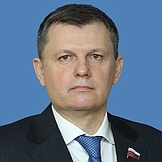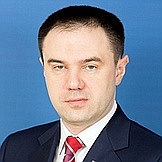Regional flags and emblems


PROFILE
Established 27 July 1922 as the Adygea Autonomous Region
The Adygea Autonomous Region as part of the Krasnodar Territory since 1928
The Adygea SSR as part of the RSFSR since 1991
The Republic of Adygea (Adygea) since 1992
Capital Maikop
The Republic of Adygea is part of the Southern Federal District
Area 7,800 sq km
Population 501 000 (2025)
Ethnic groups
(2020 National Census, %)
Russian – 64,43
Adyghe – 21,97
Circassian – 3,61
Armenian – 3,32
Kurd – 1,17
Other – 5,50
The Republic of Adygea is a multinational republic which is home to more than 100 nationalities.
Administrative divisions (2024)
Municipal districts – 7
City districts – 2
Rural towns – 3
Rural districts – 48
Geography and climate
The Republic of Adygea is located in the northwestern Caucasus, on the left bank of the Kuban and Laba rivers. The northern part of the republic is situated on a plain, and the southern in the piedmont of the Greater Caucasus. The Republic of Adygea is an enclave within the Krasnodar Territory and shares no borders with other Russian regions.
The region has a moderately warm and humid climate, with January being the coldest month (temperatures average 1.6°C) and July the warmest (temperatures average 23,6°C). The climate is determined by the close proximity to the Black Sea, which never freezes, and the mountain range distribution, which affects the movement of the clouds.
The number of sunny days (up to 250 on the average) is an important climatic and recreational trait. The winter is short, with little snow.
There are specially protected natural areas in the region: the Federal State Budgetary Institution ”Caucasian State Natural Biosphere Reserve named after H.G. Shaposhnikov“, the Nature Park of the Republic of Adygea ”Bolshoi Tkhach“.
UNESCO has included Adygea’s mountainous regions in the World Natural Heritage List in the Western Caucasus category (about 14% of the republic’s area).
Government
The legislative branch is represented by the State Council-Khase of the Republic of Adygea, which is the permanent, executive and only body of legislative authority in the region.
The State Council-Khase of the Republic of Adygea has 50 deputies elected for five years, with 25 of them running in single-member constituencies and the other 25 in a single electoral district, where winners are identified in proportion to the number of votes cast for lists of candidates nominated by electoral associations.
The current State Council-Khase of the Republic of Adygea was elected in September 2021. Its term expires in September 2026.
The executive branch in the Republic of Adygea is represented by the Head of the Republic of Adygea, the Cabinet of Ministers of the Republic of Adygea, and other executive bodies of state power of the republic.
The Cabinet of Ministers of the Republic of Adygea is the permanent supreme executive body of state power of the republic. The Head of the Republic of Adygea forms and directs the activity of the Cabinet of Ministers of the republic. The Prime Minister of the Republic of Adygea is appointed by the Head of the Republic with the consent of the State Council – Khase of the Republic of Adygea – and organizes current activities of the Cabinet of Ministers.
The Head of the Republic of Adygea is the republic’s highest-ranking official, who runs the executive branch in the Republic of Adygea, determines the system and structure of the bodies of executive authority of the Republic of Adygea. Не is elected by the deputies of the State Council-Khase of the Republic of Adygea for a term of five years. The term of the current incumbent expires in September 2027.
Economy and natural resources
Adygea is an industrial and agricultural republic with a mixed economy, represented by various forms of ownership.
Industry accounts more than 15% of the regional GDP.
Manufacturing (about 90%), power, gas and water production and distribution (over 8%) and raw material extraction (about 5%) comprise the major industries.
Manufacturing includes food (Giaginsky Milk Plant, Mamruko, Giaginsky Butter Processing Complex and Adygea Feeds Factory), machine building (Maikop Geared Engine Factory (ZAREM) and Maikop Machine Building Plant), metal processing and textile, sewing, timber, pulp and paper production. Manufacturers use mostly local raw materials.
Power, gas and water are produced and distributed via the energy complex, which is represented by heating and thermal stations (Lukoil-Energo’s Maikop Hydroelectric Power Plant, Maikop Thermal Power Plant and Adygenergostroi). Over 80% of the republic’s territory is connected to the gas supply network.
Raw materials are extracted from the explored deposits of construction materials (gypsum and limestone), industrial mining materials (glauconite, barite and dolomite) and mineral waters.
Agriculture accounts for over 12% of the regional GDP and specialises in cereals (spring and winter wheat and barley), legumes (pea, beans and grain maize), technical crops (sugar beet, sunflower and soya), gourds and vegetables. Livestock farming is also an important agricultural sector where dairy and meat production, sheep and horse breeding and poultry are the leading areas. Beekeeping is well-developed in the republic’s northern part. In recent years, much attention has been paid to the development of horticulture.
Adygea’s unique natural and climatic conditions are conducive to the development of tourism, which is becoming one of the main industries of the region’s socioeconomic development.
The Republic of Adygea maintains active foreign economic cooperation with the Republic of Abkhazia, the Republic of Belarus, the Republic of Kazakhstan and the People’s Republic of China.
Culture and tourism
The Republic of Adygea is a large cultural and tourism centre in the Northern Caucasus. Adygea has many natural, cultural and historical sights.
Adygea’s culture is diverse: it unites the centuries-old history of tribes and peoples who inhabited the region in the past and who live here today. There are over 400 cultural landmarks, with nine being of federal significance. The region has eight state and 23 public museums, with the National Museum of the Republic of Adygea being the most important one. The exhibits include unique archaeological, ethnographic and natural collections from various historic periods. The St Michael’s Athos Monastery is a renowned spiritual centre for Orthodox Christians.
The favourable combination of remarkable landscapes, favourable climate, mineral springs and exotic natural zones creates unique conditions for active recreation and the treatment of ailments. Adygea has a modern resort base and good conditions for developing tourism. The republic has a good mix of tourism to offer – sportive, educational, health and extreme.
Most sights in the republic are created by nature: caves, canyons, plateaus, forests, rivers and lakes. The Lago-Naki Plateau, which is located at an altitude of 1,600 m and which has many caves, such as Bolshaya Azishskaya and Dakhovskaya caves, is most popular among tourists.
The famous Khadzhokh Dolmen is situated in the mountain village of Guzeripl in the Caucasus Natural Reserve. Several hundred dolmens are located in groups in the Bogatyrskaya and Deguakskaya Polyana dolmen complexes.
Other notable landmarks include Mount Fiziabgo, Guam Gorge, the enormous rock called Kazachy Kamen (Kossack Rock), waterfalls of the Rufabgo Stream, karst caves of Kamennoye More (Stone Sea), the Fisht-Oshten mountain range and the Bolshoi Tkhach Nature Park.


